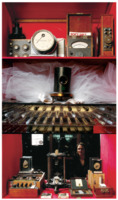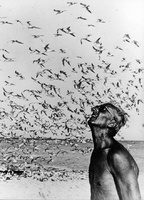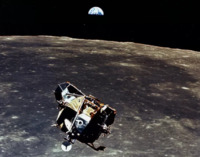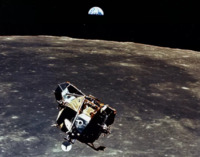Items
Site
The Medicine Chest
keywords is exactly
gravity
-

Capitance
"Strategies such as juxtapositioning also served to highlight poetic and emotive qualities in fields not known for encouraging them, as in a cabinet curated by Langerman titled Capitance. This featured a range of instruments from the Physics department used to measure electrical currents (galvanometers, capacitors and Wheatstone bridges); a crystal goniometer measuring crystal face angles and crystal 175 from the crystal collection in Geological Sciences; M.R. Drennan’s models of the human embryo and a wax model of flesh; and a white tutu from the School of Ballet. In combining this selection of scientific instruments with a tutu, Langerman made allowance for the materials to be considered in a more poetic light, inviting the viewer to consider how a grand jeté defies the laws of physics, for example" (Liebenberg 2021: 186). -

Falling stars
Published in 1841, Jackson’s guide was the first of a series of guides published during this period which offered notes for the traveller on appropriate conduct in the field – from providing methods for training the eye to observe what was deemed as relevant details, to instructions on which precision instruments should be carried and how to use them to record and inscribe the results of observations made (Withers 2013: 170). As Jackson states, his guide pointed out to the “uninitiated Traveller what he [sic] should observe, and to remind the one who is well informed, of many objects which (…) might escape him” (Jackson 1841: i). -

Lithograph of underwater scene
Lithograph of underwater scene by Eugen Ransonnet-Villez, from colour pencil drawings made by the artist while submerged in his diving bell, from his 'Sketches of the Inhabitants, Animal Life and Vegetation in the Lowlands and High Mountains of Ceylon' (1867) -

Perpetuum Mobile (2400KG)
Water, bucket, hydrophone, mist-machine, 2 400kg cement, relay timer, amplifier and cable. Water is set in motion by means of ultrasound (at times amplified by loudspeakers), generating steam that slowly spreads through the exhibition space and envelops sacks of cement whose mass is changed as the exhibition proceeds by the meandering atmospheric humidity. -

Silicosis
A gold miner using a rock drill with a water spray in an attempt to prevent the occupational disease silicosis, caused by dust inhalation. -

The Sea Birds of Isabella
Aired between 1968 and 1976, 'The Undersea World of Jacques Cousteau' was a documentary television series about underwater marine life. It was directed by Alan Landsburg and hosted by French filmmaker, researcher, and marine explorer Jacques Cousteau. In the 33rd episode of the series, titled 'The Sea Birds of Isabella', the crew journeys off the coast of Mexico to an island to study its tropical birds. Three years after it was shown, Cousteau's son, Phillipe (then aged 38) died trying to land his seaplane, called the Flying Calypso, on the Taos River in Portugal. -

Moon landing
"FIZZY LIFTING DRINKS, it said on the next door. ‘Oh, those are fabulous!’ cried Mr Wonka. ‘They fill you with bubbles, and the bubbles are full of a special kind of gas, and this gas is so terrifically lifting that it lifts you right off the ground just like a balloon, and up you go until your head hits the ceiling – and there you stay.’ ‘But how do you come down again?’ asked little Charlie. ‘You do a burp, of course,’ said Mr Wonka. ‘You do a great big long rude burp, and up comes the gas and down comes you! But don’t drink it outdoors! There’s no knowing how high up you’ll be carried if you do that. I gave some to an old Oompa-Loompa once out in the backyard and he went up and up and disappeared out of sight! It was very sad. I never saw him again.’ ‘He should have burped,’ Charlie said. ‘Of course he should have burped,’ said Mr Wonka. ‘I stood there shouting, “Burp, you silly ass, burp, or you’ll never come down again!” But he didn’t or couldn’t or wouldn’t, I don’t know which. Maybe he was too polite. He must be on the moon by now’” (Dahl 1974: 95). -

The Eagle has landed (Apollo 11 Lunar Module Ascent Stage Photographed from Command Module)
The Apollo 11 Lunar Module ascent stage, with Astronauts Neil A. Armstrong and Edwin E. Aldrin Jr. aboard, is photographed from the Command and Service Modules (CSM) during rendezvous in lunar orbit. The Lunar Module (LM) was making its docking approach to the CSM. Astronaut Michael Collins remained with the CSM in lunar orbit while the other two crewmen explored the lunar surface. The large, dark-colored area in the background is Smyth's Sea, centered at 85 degrees east longitude and 2 degrees south latitude on the lunar surface (nearside). This view looks west. The Earth rises above the lunar horizon.


